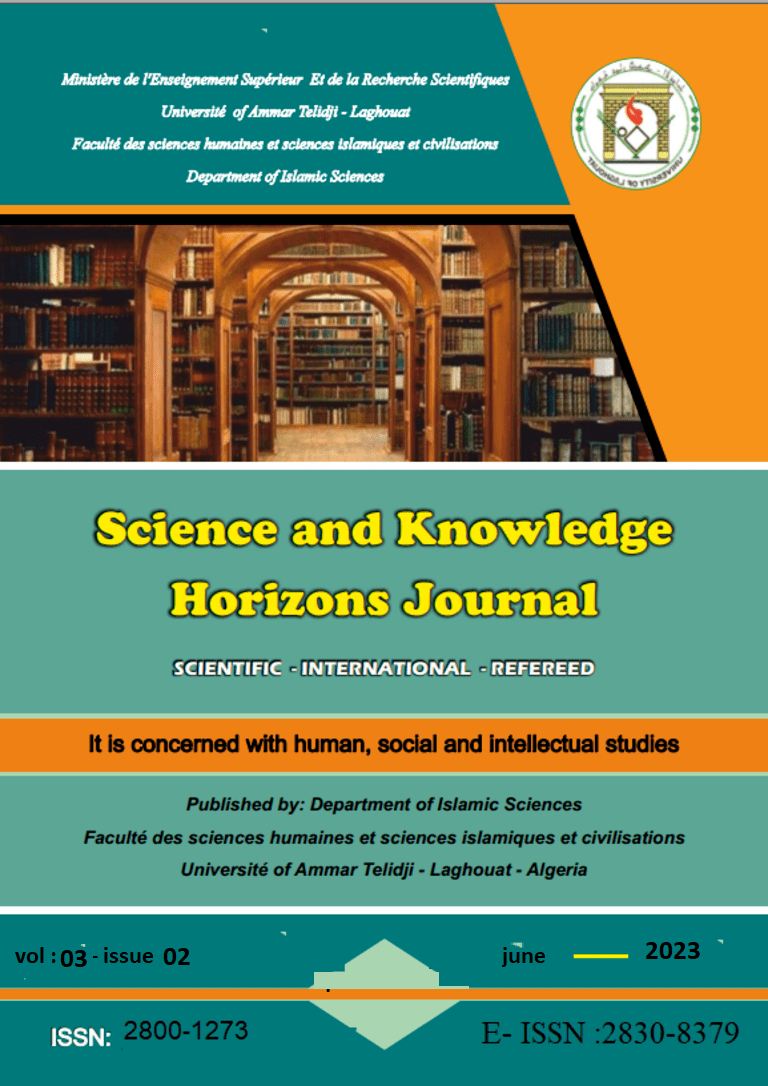Didactic image, its importance, conditions and controls for its use
Abstract
The integration of visual arts into the educational learning process contributes to raising the degree of scientific awareness and keeping pace with the development witnessed in the philosophy of education and international education systems. Among the forms of visual arts, we find the image, this medium that occupies a prominent place in the educational field, as through it the emotional, physical, psychological, cognitive and mental aspects of the learner are developed. And through it, the teacher and the learner can both practice understanding and explaining on the grounds that the image, whether fixed or animated, as carrying denotative and connotative significations, as it brings understanding closer to the minds away from abstraction, and thus the didactic image has many functions that are used in the process of teaching and learning, which made it is characterized by being an important and necessary pedagogical tool in the educational field, in addition to its quality mainly linked to its good selection and usage pattern. Therefore, in this article, we will try to talk about the role of visual arts in general, and the image in particular, in educational and learning practice, in order to be in line with scientific and cognitive progress and the improvement of language learning, through:
- Clarifying what is meant by visual arts and its relationship to the educational aspect;
- The requirements of the didactic image and its necessary conditions in educational practice;
- The importance of the image in promoting didactic research;
- How to use the picture in teaching the Arabic language to improve learning;
In order to achieve these goals, the descriptive analytical approach was relied on to serve and the nature of the subject under study
Downloads
References
2. Al-Baqi, Mohamed Abdel Ahmed, (2005), The Teacher and Teaching Aids, 1st Edition, The Modern University Office, Cairo, Egypt.
3. Hijazi Abdel-Moati, (2017), Engineering Teaching Aids, (D-i), Dar Osama for Publishing and Distribution, Kuwait.
4. Al-Darej Muhammad, (2000), Analyzing the educational process: An introduction to the science of teaching, Qasr al-Kitab, Blida, Algeria.
5. Ezzahi Farid (2017), From Image to Visual; Chronicles and Transformations, 1st Edition, The Book Cultural Center, Casablanca, Morocco
6. Al-Ziyadi Ahmed Muhammad and Al-Khatib Ibrahim Yassin, (2000), The Image of Childhood in Islamic Education, 1st Edition, International Scientific House for Publishing and Distribution, Amman.
7. Shaker Abdel-Hamid, (2005), The Age of the Image, Pros and Cons, World of Knowledge Publications, Kuwait.
8. Taima Rushdi Ahmed and others, (2007), linguistic concepts in children, 1st edition, Dar Al-Masira for Publishing and Distribution, Amman, Jordan.
9. Al-Anati Walid, (2011), Arabic and Applied Linguistics, Dar Treasures of Scientific Knowledge for Publishing and Distribution, Amman, Jordan.
10. Goity Guy, (2012), Imagery, Components and Interpretation, translated by Saeed Bengrad, 1st Edition, Arab Cultural Center, Casablanca, Morocco
11. Fadl Salah, (1997), Image Reading and Image Reading, 1st Edition, Dar Al-Shorouk, Cairo, Egypt.
12. Al-Jundi, Reham Muhammad Fahim, (2020), Integration of Visual Arts into the Education Development System, Studies in University Education, Egypt, Special Issue 49 (49) Proceedings of the Thirteenth International Conference, Egypt, 10-11 October, pp. 91-93
13. Al-Radwani Muhammad Salim, (2021), Visual Representation, Alamat Magazine, Morocco, p. 54, pp. 29-32
14. Salwa Al-Najjar, (2006), The Energy of the Semantic Image, Alamat Magazine, Morocco, p. 25, pp. 91-102
15. Al-Amri Muhammad, (2009), Cognitive Integration between Plastic Arts and Curricula in the Sultanate of Oman, Journal of Educational and Social Studies, Helwan University, Egypt, 15 (3), part 2, pp. 407-448
16 Qasim Abdullah Muhammad, (2017), Image Culture and Visual Culture among Children: Modern Educational-Psychological Issues, Arab Childhood Journal, Kuwait, 18 (71), pp. 9-37

This work is licensed under a Creative Commons Attribution-NonCommercial 4.0 International License.





